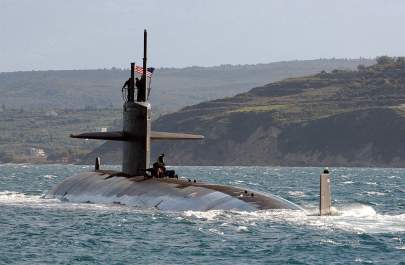US Navy Aircraft Carriers Are Waddling Ducks - By Laurence F. Sanford
By ASCF Senior Analyst Laurence F. Sanford
May 27, 2022

The United States Navy’s aircraft carrier battle groups are “waddling ducks” for missile, drone, and laser guided bomb attacks from hostile powers such as China, Russia, Iran, North Korea and other nation states inimical to the United States. The Navy should scrap aircraft carriers and put the money into submarines and missile/drone launching platforms.
The aircraft carrier group is analogous to the Maginot Line of France in 1938. Technology that worked in the past does not mean it will work in the future. Aircraft carriers in World War II replaced the battleships of World War I. Missiles will replace aircraft carriers in World War III.
Billions of French francs were spent in the 1930’s building fortifications along the German border to stop a German invasion as was done in World War I. Unfortunately, France did not construct fortifications along the Belgium border. Thus German tanks rolled through Belgium and were soon in Paris.
An American nuclear carrier battle group represents well over twenty billion dollars in construction costs and seven thousand Navy personnel. A new Ford class carrier costs over thirteen billion dollars. Add the cost of airplanes at fifty million dollars each plus supporting destroyers and supply ships plus personnel and supplies, twenty billion dollars is a conservative cost estimate.
In the World War II Pacific theater, planes from aircraft carriers were the delivery mechanisms of destruction to battleships, aircraft carriers, other ships and military installations. Near the end of World War II, a glimpse of the missile future was displayed when the Japanese deployed kamikaze (divine wind) suicide planes, acting as no return missiles, against American ships with devastating effect. In the 1982 Falklands War between the UK and Argentina, French-made Exocet missiles used by Argentina sank two and damaged a third British warship. In the current Ukraine/Russia war, two Ukrainian made Neptune missiles sank the Russian cruiser Moskva.
Defenders of the carrier strategy claim that carriers are mobile and therefore difficult for missile systems to locate. With each passing day, space based technologies can better pinpoint carrier locations and hypersonic missiles can be on target in minutes. Submarines and fishing boats can also pinpoint carrier locations. Carriers may not be “sitting ducks” but 30 knot evasive maneuvers (waddling) will not work against hypersonic missiles.
China began deploying the “carrier-killer” DF-26 ballistic missile in 2016. With a range of 3000 miles and capable of carrying either a conventional or nuclear warhead, it effectively nullifies aircraft carriers in the western Pacific. Taiwan can not depend upon US carriers to defend it. The missiles can also reach Guam with its extensive US military bases. China has and continues to conduct DF-26 missile testing in the Taklamakan Desert, in Xinjiang, with mock Navy ship targets and port facilities.
Defenders of the carrier strategy claim that carriers have defensive capabilities that will nullify incoming attacks. This may be true for a few incoming missiles but doubtful if 100 missiles are incoming. The Russian cruiser Moskva was a sophisticated missile carrying ship and yet just two missiles took her down. The Chinese will not launch one or two missiles.
An aircraft carrier’s entire purpose is to project air power off-shore. It is basically a floating mobile airfield that can be sunk with missiles. Aircraft have diminishing effectiveness with the development and deployment of new anti-aircraft missile systems.
The Navy needs to allocate its resources towards platforms that have high survivability such as submarines and low cost such as drones and missile carrying converted merchant ships with double hulls. Diesel electric submarines, costing $500 million each, should be included in the mix. A nuclear attack submarine costs $5 billion. For the price of one nuclear submarine, the Navy can have ten diesel electric submarines with near nuclear capabilities. Numbers matter and the Navy’s mission requirements are stretched to the breaking point with present limited ships and resources.




